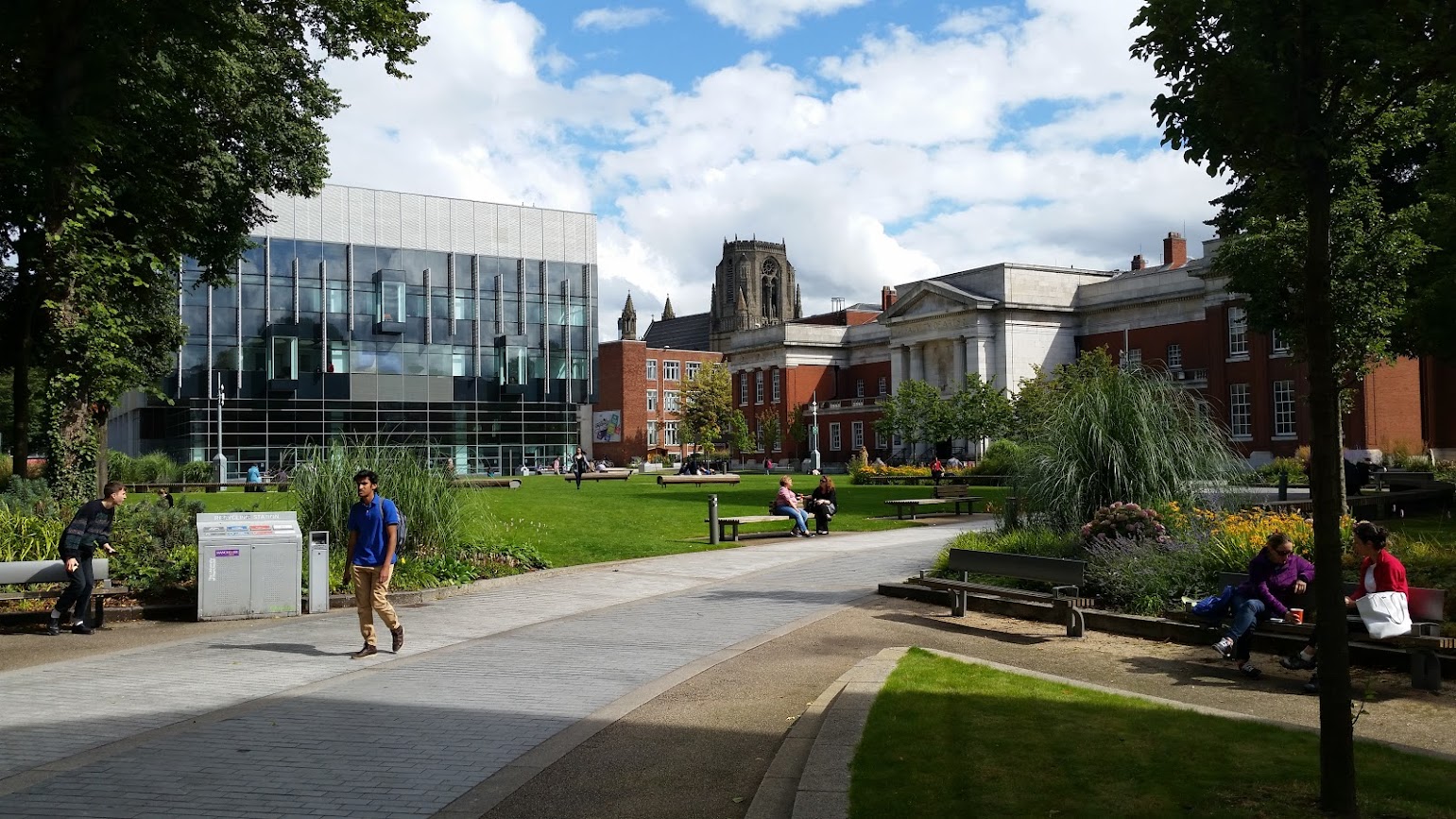Science
University of Bradford Unveils Digital Map to Enhance Campus Navigation

The University of Bradford has introduced an innovative interactive digital campus map aimed at improving accessibility and enhancing the overall student experience. This new platform replaces traditional static signage and paper maps, providing a modern navigation tool that is accessible to students, staff, and visitors on various digital devices. By aligning this initiative with its broader digital transformation strategy, the university aims to create a more connected and user-friendly campus environment.
With over 13,000 students and staff representing more than 120 nationalities, the University of Bradford has established a reputation for inclusiveness and innovation. However, as the campus evolved and new facilities were added, navigation became increasingly complicated. According to Markus Jones, Space Planning Manager at the university, “Keeping static maps updated was a continuous challenge. Students would often rely on outdated signage or printed materials, which led to confusion and unnecessary stress, especially for new arrivals or visitors with accessibility needs.”
The university’s new digital map is designed to provide accurate, real-time navigation across all buildings and facilities. Users can easily search for lecture halls, study spaces, accessibility routes, and amenities directly from their phones or laptops. This project is a vital component of Bradford’s movement towards a smarter campus ecosystem, integrating various student-focused systems into a single unified platform.
Seamless Integration and User Experience
The digital map is already integrated into the university’s new campus app, developed in collaboration with Santander Universities. This app serves as a central hub for students, offering access to timetables, events, and campus services. While the platform operates in the background, its benefits are evident: fewer students getting lost, reduced missed meetings, and a campus that feels more intuitive to navigate.
The primary goal of the initiative is long-term integration of functionalities. Future plans include a cohesive network that covers various university operations, such as room bookings and enhanced accessibility features. To bring this vision to life, the university partnered with MazeMap, a firm specializing in creating accurate, interactive maps. The technology developed allows internal teams to quickly update building layouts without external assistance. The collaboration led to a smooth implementation process, converting the university’s existing CAD drawings into a digital format in a matter of weeks.
Future Prospects and Student-Centric Design
The management at the University of Bradford views digital navigation as a cornerstone for broader transformation initiatives. Upcoming enhancements will layer space utilization data, integrate room-booking capabilities, and improve accessibility through features like Blue Dot positioning. This technology enables real-time indoor tracking, akin to outdoor GPS systems.
University leaders have emphasized the importance of creating an environment that meets the needs and expectations of contemporary students, envisioning a connected, inclusive, and digitally enabled campus. As universities across the UK increasingly adopt digital-first strategies to enhance student experience and sustainability, Bradford’s approach highlights how smart navigation systems can play a crucial role in achieving these goals.
Dr. Tim Sandle, Editor-at-Large for science news at Digital Journal, notes that this initiative is not just about improving navigation; it reflects a broader commitment to modernizing the campus experience. The University of Bradford’s innovative digital map is set to redefine how students, staff, and visitors navigate their academic environment, paving the way for a more efficient and inclusive future.
-

 Education3 months ago
Education3 months agoBrandon University’s Failed $5 Million Project Sparks Oversight Review
-

 Science4 months ago
Science4 months agoMicrosoft Confirms U.S. Law Overrules Canadian Data Sovereignty
-

 Lifestyle3 months ago
Lifestyle3 months agoWinnipeg Celebrates Culinary Creativity During Le Burger Week 2025
-

 Health4 months ago
Health4 months agoMontreal’s Groupe Marcelle Leads Canadian Cosmetic Industry Growth
-

 Science4 months ago
Science4 months agoTech Innovator Amandipp Singh Transforms Hiring for Disabled
-

 Technology4 months ago
Technology4 months agoDragon Ball: Sparking! Zero Launching on Switch and Switch 2 This November
-

 Education4 months ago
Education4 months agoRed River College Launches New Programs to Address Industry Needs
-

 Technology4 months ago
Technology4 months agoGoogle Pixel 10 Pro Fold Specs Unveiled Ahead of Launch
-

 Business3 months ago
Business3 months agoRocket Lab Reports Strong Q2 2025 Revenue Growth and Future Plans
-

 Technology2 months ago
Technology2 months agoDiscord Faces Serious Security Breach Affecting Millions
-

 Education4 months ago
Education4 months agoAlberta Teachers’ Strike: Potential Impacts on Students and Families
-

 Education4 months ago
Education4 months agoNew SĆIȺNEW̱ SṮEȽIṮḴEȽ Elementary Opens in Langford for 2025/2026 Year
-

 Science4 months ago
Science4 months agoChina’s Wukong Spacesuit Sets New Standard for AI in Space
-

 Business4 months ago
Business4 months agoBNA Brewing to Open New Bowling Alley in Downtown Penticton
-

 Business4 months ago
Business4 months agoNew Estimates Reveal ChatGPT-5 Energy Use Could Soar
-

 Technology4 months ago
Technology4 months agoWorld of Warcraft Players Buzz Over 19-Quest Bee Challenge
-

 Business4 months ago
Business4 months agoDawson City Residents Rally Around Buy Canadian Movement
-

 Technology2 months ago
Technology2 months agoHuawei MatePad 12X Redefines Tablet Experience for Professionals
-

 Technology4 months ago
Technology4 months agoFuture Entertainment Launches DDoD with Gameplay Trailer Showcase
-

 Top Stories3 months ago
Top Stories3 months agoBlue Jays Shift José Berríos to Bullpen Ahead of Playoffs
-

 Technology4 months ago
Technology4 months agoGlobal Launch of Ragnarok M: Classic Set for September 3, 2025
-

 Technology4 months ago
Technology4 months agoInnovative 140W GaN Travel Adapter Combines Power and Convenience
-

 Science4 months ago
Science4 months agoXi Labs Innovates with New AI Operating System Set for 2025 Launch
-

 Technology4 months ago
Technology4 months agoNew IDR01 Smart Ring Offers Advanced Sports Tracking for $169









